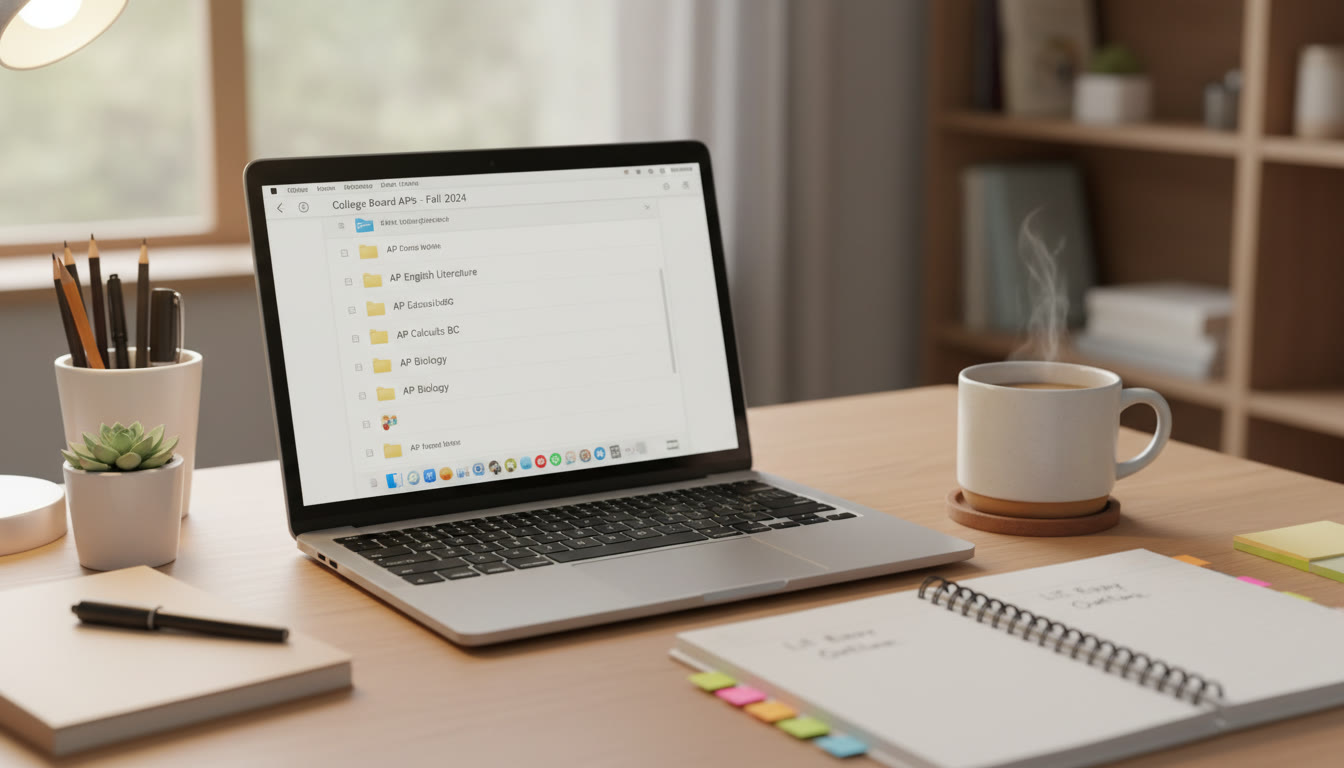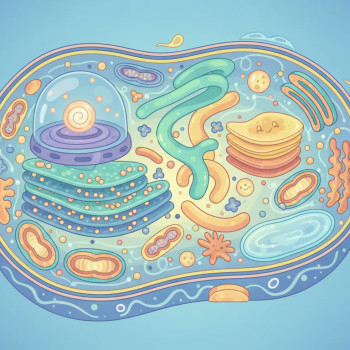Why an End-of-Year Archive Matters (and Why You Should Start Now)
Think of your end-of-year archive as the curated trunk of your senior-year story — everything admissions officers, scholarship committees, and recommendation writers might want when they peek behind the polished résumé. Too many students scramble in January, pulling together last-minute PDFs, frantic screenshots of awards, and fuzzy photos of club posters. Starting a thoughtful archive now gives you calm, clarity, and control. It turns chaos into narrative: evidence of growth, curiosity, and contribution.

What the archive DOES for you
- Preserves verifiable evidence of accomplishments so you can attach, quote, or summarize accurately.
- Makes it easy to craft compelling anecdotes for essays and interviews because you’ll have dates, numbers, and documents at hand.
- Simplifies teacher recommendation writing — the more precise your archive, the stronger and faster a recommender can be.
- Helps you reflect: you’ll see patterns (leadership, resilience, curiosity) that shape your application narrative.
Core Sections: What to Save (and Why)
Organize the archive into clear folders so future-you — and anyone helping you — can find things without a scavenger hunt. Below are the essential sections and exactly what to put in each.
1. Academic Records
Why: Colleges need a reliable academic snapshot; you also want proof for grade- or course-based claims.
- Official and unofficial transcripts (PDFs) — include the date pulled.
- Course list for each year (especially AP, dual-enrollment, IB, or honors courses), noting semester grades and teacher names.
- AP scores (digital score reports or screenshots) — save confirmation emails or score report PDFs.
- Notable graded work: a standout essay, lab report, or project with feedback/comments. These are excellent seed material for essays and interviews.
2. Awards, Recognitions, and Test Scores
Why: Evidence beats claims. A tidy scorecard or award letter proves what you say in your résumé.
- AP score receipts and score report screenshots.
- Award certificates (regionals, state, national, school honors) — scanned or photographed.
- Scholarship acceptance letters or finalist notifications.
- Standardized test score reports you plan to include (if applicable).
3. Extracurriculars & Leadership
Why: Specifics show impact. Rather than “club president,” admissions officers want to see what you changed, how many people you led, and what you learned.
- Roles, dates, and responsibilities for each activity (concise bullets work well).
- Photos of events (high quality), program flyers, or websites showing your role.
- Quantitative impact: money raised, participants reached, hours volunteered — any numbers that demonstrate scale.
- Letters or emails from advisors verifying role and impact (when possible).
4. Work, Internships, and Research
Why: Professional or research experiences are powerful, especially when tied to real outcomes.
- Offer letters, internships completion certificates, or supervisor emails confirming dates and duties.
- Summaries of projects with outcomes (what you built, what the results were, what you learned).
- Sample deliverables: code snippets, project slides, research abstracts, or posters (redact sensitive info if needed).
5. Creative Work and Portfolios
Why: For arts, design, film, or creative writing, high-quality samples are essential.
- High-resolution scans or PDFs of artwork, scores, scripts, or writing.
- Links to video performances or portfolios (note permissions and access settings).
- Context notes for each piece: why you made it, date, medium, and any reception or awards.
6. Recommendation Materials and Contacts
Why: Recommenders write better letters with details. Make it easy for them.
- Contact info and preferred pronouns of each recommender.
- Brief bullet points for each recommender: classes taken with them, projects, memorable moments, and three qualities you’d like emphasized.
- Deadline reminders and submission instructions for each school.
7. Essays, Drafts, and Supplemental Answers
Why: Drafts show evolution. Keep versions to track ideas and pull powerful lines into supplements.
- All personal statement drafts with dates and brief notes about what changed and why.
- Supplement answers and college-specific prompts saved in one place.
- Feedback emails or comments from peers, counselors, or tutors (Sparkl’s personalized tutoring can be particularly helpful here for targeted feedback and structure suggestions).
Practical Organization: Folder Structure and Naming Conventions
Simple, consistent naming saves time. Use an online cloud drive (Google Drive, Dropbox, etc.) and mirror it on your computer for offline access. A one-line folder template:
- YYYY_Semester_Category_Item (e.g., 2024_Fall_AP_Score_EnglishLang.pdf)
Suggested top-level folders
- 01_Academic_Records
- 02_Test_Scores
- 03_Activities
- 04_Work_Research
- 05_Creative_Portfolio
- 06_Recommendations
- 07_Essays
- 08_Application_Extras (résumé, interview notes)
How to Turn Archive Items into Application Gold
Raw documents become persuasive application moments when you translate them into clear achievements and stories. Here’s how to do that without exaggeration.
From Document to Story: The 3-Step Approach
- Context: Describe the situation in one sentence (what, when, why it mattered).
- Action: State your role and the steps you took — be specific about your contribution.
- Impact: Quantify results or explain what changed and what you learned.
Example: Instead of saying “Led the environmental club,” try: “As President (2023–24), I coordinated a 10-week stream cleanup campaign that recruited 60 volunteers, removed over 500 pounds of debris, and secured a $1,200 grant to fund equipment — showing how small-scale civic action can influence town policy on littering.”
Use Your Archive to Strengthen Essays
When you draft your personal statement or supplements, pull direct evidence from your archive: dates, project names, numerical results, and short quotes from feedback. These details make your essays feel lived-in and credible.
Table: End-of-Year Archive Checklist (Printable)
| Section | Item | Why It Helps | Have You Saved It? |
|---|---|---|---|
| Academic Records | Transcripts, notable graded work | Proof of rigor and academic growth | ☐ |
| Test Scores | AP Score Reports | Verifies subject mastery for credit or placement | ☐ |
| Awards | Certificates, emails | Third-party validation of achievement | ☐ |
| Extracurriculars | Photos, impact numbers, advisor notes | Shows leadership and contribution | ☐ |
| Work/Research | Project summaries, supervisor emails | Demonstrates real-world skills and initiative | ☐ |
| Essays | Drafts, feedback | Tracks development and strongest lines | ☐ |
| Recommendations | Contact info, bullet points for writers | Makes it effortless for recommenders | ☐ |
Digital Best Practices: Backup, Privacy, and Presentation
Once you collect everything, make sure it’s secure, private, and presentation-ready.
Backup Strategy
- Use cloud storage plus a separate local copy (external drive or encrypted folder).
- Set version history for important documents so you can revert to earlier drafts if needed.
- Share only necessary folders with counselors or tutors; set view-only permissions when appropriate.
Privacy and Permissions
When you include photos or letters that mention other people, ask permission before sharing. If a recommender writes about sensitive specifics (discipline, family situations), discuss what you both are comfortable including in an application.
Polish for Presentation
- Convert documents to PDF for stability and consistent rendering.
- Label files clearly and add a one-line description where beneficial (e.g., “2024_Senior_Project_Presentation — 12 slides summarizing research on urban pollinators”).
- Compress large media (video/audio) and keep a high-res archive copy for portfolio submissions.
How Counselors, Recommenders, and Tutors (Like Sparkl’s Personalized Tutoring) Use Your Archive
A quality archive doesn’t just help you — it helps the adults supporting your application. Counselors and recommenders can write with more specificity; tutors can tailor feedback to the exact piece you’re polishing. If you work with Sparkl’s personalized tutoring, for instance, sharing targeted archive items allows your tutor to create a tailored study or essay revision plan, use AI-driven insights for weak spots, and schedule 1-on-1 guidance around deadlines.
Examples of Useful Shared Items
- A past essay with teacher comments — great starting point for a rewrite session.
- An AP score report and graded unit exam — helps tutors detect conceptual gaps and design practice sessions.
- Project summaries and supervisor feedback — useful for polishing extracurricular descriptions and recommendation talking points.
Common Mistakes and How to Avoid Them
Even students who try to stay organized can fall into a few traps. Here are the top ones and quick fixes.
Mistake 1: Saving Everything Without Structure
Fix: Use a simple folder hierarchy and consistent naming. Spend one afternoon reorganizing rather than letting files pile up indefinitely.
Mistake 2: Over-relying on Memory
Fix: Add dates next to each item and a one-sentence context note so you won’t have to rely on foggy recollection months later.
Mistake 3: Ignoring Quality
Fix: Replace blurry photos and screenshots with clear scans. Convert to PDF for documents and export high-quality JPEGs or MP4s for media.
Timeline: When to Update Your Archive
Updating the archive should be an ongoing habit rather than a single chore. Here’s a simple schedule you can follow through senior year.
- Monthly: Add graded work, event photos, and new roles or hours for activities.
- Quarterly: Review and pull out the most compelling items into an “Application Highlights” folder for quick access.
- One month before applications open: Finalize your résumé, pull polished essay drafts, and prepare recommendation briefs.
- After each major update (new award, new internship): Notify your recommender if you want that reflected in their letter.
Reflection Section: Building Your Narrative
An archive is not just a filing system — it’s material for reflection. Spend time each month asking: What surprised me? Where did I struggle? What project changed the way I think? These reflections make essays authentic and show growth — the single most compelling theme to admissions readers.
Short Prompts to Spark Reflection
- Describe one moment this year when you failed and what you learned.
- What project made you lose track of time and why?
- If you could go back to freshman year, what advice would you give yourself?
Closing Thoughts: Calm, Consistent, Compelling
Collecting an end-of-year archive is less about hoarding documents and more about curating the honest, detailed evidence of who you are. With a tidy archive, you’ll write clearer essays, get stronger recommendations, and present a compelling application that’s both accurate and memorable.
And if you want help turning archive items into essay material, résumé bullets, or targeted study plans, consider scheduling a few focused sessions with a tutor. Sparkl’s personalized tutoring can offer 1-on-1 guidance, tailored study plans, and AI-driven insights to speed improvements and keep your application polished — just enough support to amplify your authentic voice without taking it over.

Start now. Even small, regular steps — saving one graded paper today, scanning an award certificate this weekend — will compound into an archive that tells the true story of your senior year. That story, organized and presented well, is one of the strongest things you’ll take into your college applications.
Good luck — organize with intention, tell the truth, and let your archive show how you’ve grown.






















No Comments
Leave a comment Cancel